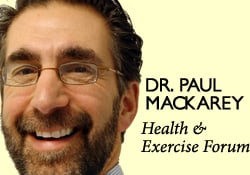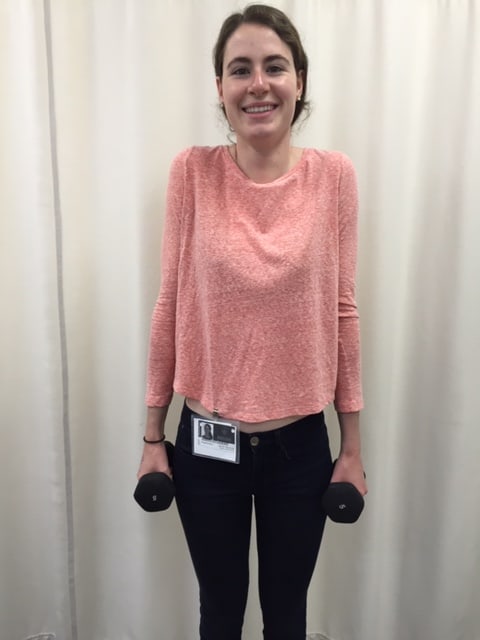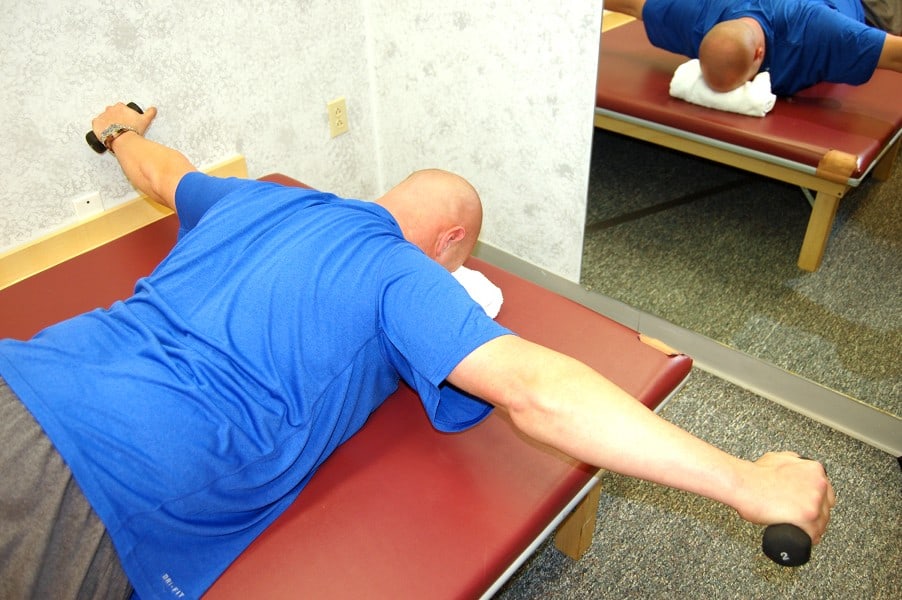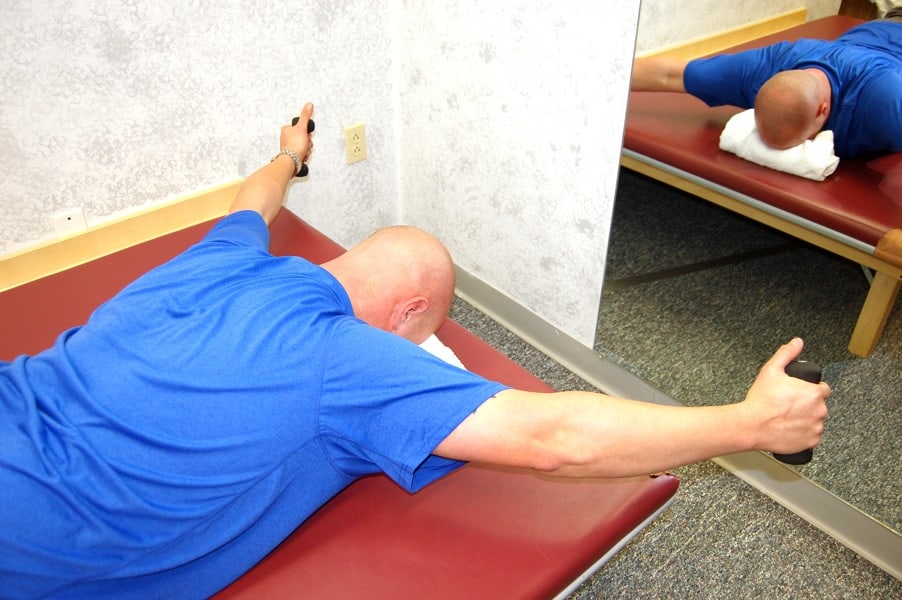
It happens every spring. A young pitching ace that started strong is now beginning to lose some speed on his fast ball. A third baseman that had no problems last week can’t throw to first base without pain. Shoulder pain in young baseball players occurs every spring just as the first robin, warmer temperatures, and the emerging sprouts of the spring flowers. And, the well-intended father/coach develops severe shoulder pain from hours of throwing balls at batting practice. The cause of the condition was the usual: not properly preparing the arm for the season.
Spring shoulder pain may be prevented with the proper preparation for the season. Throwing a baseball requires the shoulder to be very strong. In the off season, a shoulder can lose much of its essential strength. This loss will result in a deconditioned shoulder at the start of the first spring practice. Practicing with a deconditioned shoulder commonly results in sprain, strain and pain.
To avoid spring shoulder pain it is necessary to maintain shoulder strength. Strengthening exercises need to concentrate on three groups of muscles: the large power muscles of the shoulder, the muscles which stabilize the shoulder and the all important rotator cuff muscles. Strengthening power muscles of the shoulder is fairly easy. Pushups, lat pulldowns, bench presses, and bicep curls will cover all bases. While these exercises are important in maintaining strength and power of the throwing shoulder, they are not as important as the exercises for shoulder stabilizers and rotator cuff muscles.
The shoulder stabilizer muscles connect the arm to the torso. They serve as the foundation of the arm helping to stabilize the arm to the torso. The many stabilizing muscles include the trapezius and the rhomboid muscles.
Exercise for theses muscles include: shrugs, T’s and Y’s. (See Photos A, B, C)



PHOTO A: SHRUGS: Stand with Dumbbell Weight in Hands, Raise Shoulders, Hold 3 Seconds and Repeat 10 times.
PHOTO B: “T’s”: Lying Face Down with Forehead on Towel Roll and With Light Dumbbell Weight in Hands, Raise Arms up in the shape of a “T.”
PHOTO C: “Y’s”: ”: Lying Face Down with Forehead on Towel Roll and With Light Dumbbell Weight in Hands, Raise Arms up in the shape of a “Y.”
The rotator cuff muscles have many functions. They are essential for the stability and proper function of the shoulder joint and in the throwing athlete they serve as brakes during the follow-through phase of a pitch. Exercises for the rotator cuff muscles include internal and external rotations. (See Photos D, E)


PHOTO D: Shoulder Internal Rotation: Stand with Exercise Band in the Throwing Hand and Elbow at the Side and Bent at 90 degrees, “Turn In - Against the Band.”
PHOTO E: Shoulder External Rotation: Stand with Exercise Band in the Throwing Hand and Elbow at the Side and Bent at 90 degrees, “Turn Out - Against the Band.”
While exercise is essential for conditioning the shoulder in the off-season, a graduated throwing program is also important. In the book The Athlete’s Shoulder, a throwing program is suggested. Training is every other day with a day’s rest in between. A ten minute warmup such as light jogging is suggested before throwing.
Day 1: 45ft – 25 throws - rest - repeat
Day 3: 45ft – 25 throws - rest – repeat – rest – repeat
Day 5: 65ft – 25 throws - rest - repeat
Day 7: 65ft – 25 throws - rest – repeat – rest – repeat
Day 9: 90ft – 25 throws - rest - repeat
Day 11: 90ft – 25 throws - rest – repeat – rest – repeat
Day 13: 120ft – 25 throws - rest - repeat
Day 15: 120ft – 25 throws - rest – repeat – rest – repeat
Day 17: 150ft – 25 throws - rest - repeat
Day 19: 150ft – 25 throws - rest – repeat – rest – repeat
Day 21: 65ft – 25 throws - rest - repeat
Day 23: 65ft – 25 throws - rest – repeat – rest – repeat
With the proper preparation, spring shoulder pain can be avoided in any baseball player.
Contributions: Gary E. Mattingly, PT, PhD is a retired professor at the University of Scranton, Dept of Physical Therapy
Models: Ron Chiavacci,, former professional baseball pitcher; Maggie Reilly, physical therapy student.
NEXT MONDAY – Read Dr. Paul J. Mackarey “Health & Exercise Forum!”
This article is not intended as a substitute for medical treatment. If you have questions related to your medical condition, please contact your family physician. For further inquires related to this topic email: drpmackarey@msn.com
Paul J. Mackarey PT, DHSc, OCS is a Doctor in Health Sciences specializing in orthopaedic and sports physical therapy. Dr. Mackarey is in private practice and is an associate professor of clinical medicine at GCSOM.